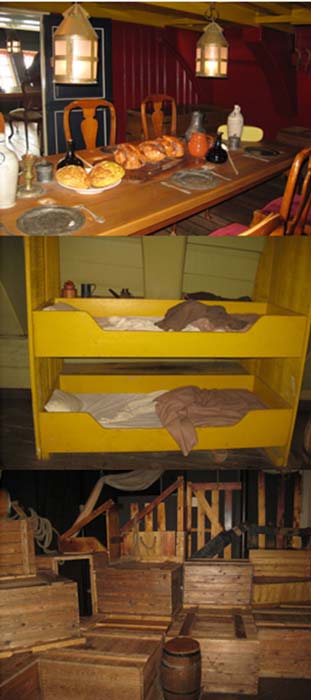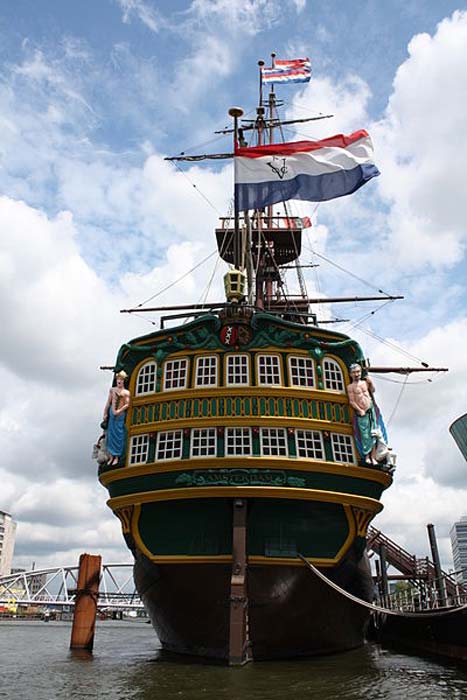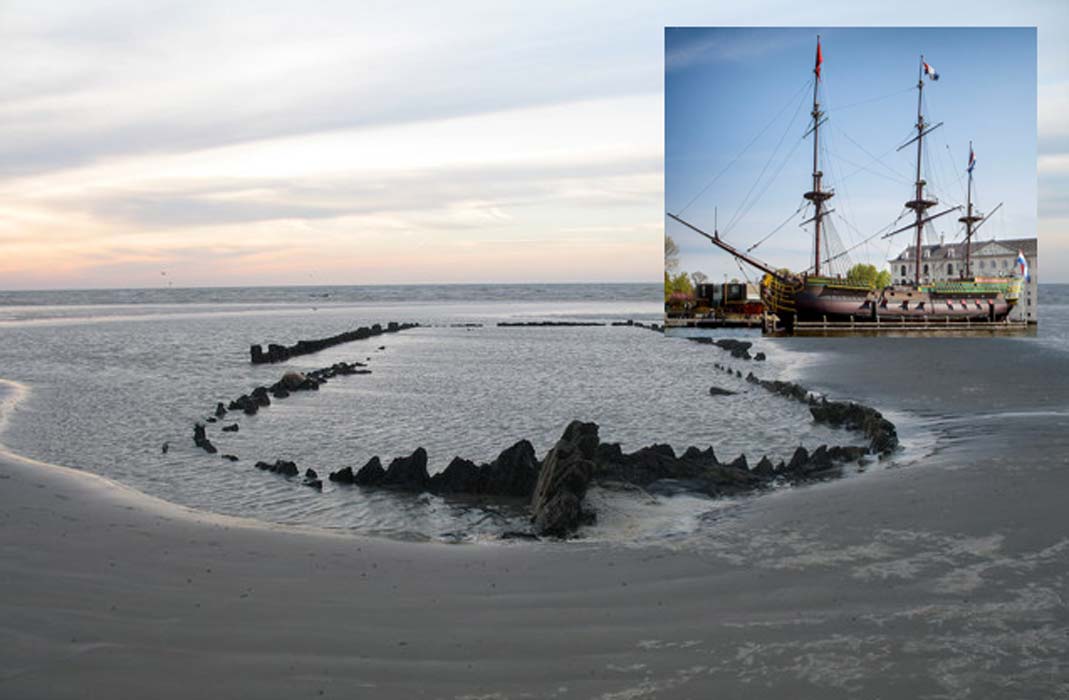The Eerie Remains of an Ill-Fated Ship That Still Preserves its Cargo Beneath the Mud
It was a cold January day when a beautiful cargo ship called Amsterdam disappeared under the waters of the English Channel. When researchers found it once again in 1969 they couldn't believe its remarkable story.
The ship was a striking cargo ship made of oak and was a source of pride for Dutch shipyards. The ship’s captain was Willem Klump, who was young but experienced. During the 33 years of his life he traveled the seas and oceans. He normally had an impressive crew of 240 people on the Amsterdam.

The shipyard of the Dutch East India Company in Amsterdam around 1750. (Public Domain)
A Beauty for Trade
The vessel was an example of the magnificent skills shipyard masters had in the 18th century. It was built for the famous Dutch East India Company, which owned a large cargo fleet at that time. The Amsterdam was made to travel from Europe to Asia and carry goods like spices, textiles, tools, and other items which were very popular in 18th century Europe.
Each of its trips would take eight months, so the ship was large enough to allow it to hold food for the sailors and still have lots of space for its rich cargo. It is known that the first trip the Amsterdam took was between November 15-19, 1748. However strong and dangerous winds didn't allow for a full ride and revision of the ship.
- Tragic Accident or Mass Murder? The Sinking of the White Ship leads to Disaster for England
- The History of the Incredible Vasa Warship and its Humiliating Shipwreck

Captain’s room, sleeping bunks, and cargo space on a replica of the Amsterdam. (Marion Golsteijn/CC BY SA 3.0)
For its last journey, the ship had traveled from the island of Texel to Batavia in the East Indies. The fatal voyage was made by 335 people: 127 soldiers, 5 passengers, and 203 crew members. Many of the people suffered and died from yellow fever.
The ship contained 27 chests of gold and silver coins and was filled with wine, textiles, cannons, pipes, paper, stone, and other goods. It is believed that the cargo lost during the storm would be worth a few million Euros nowadays. However, it is difficult to write the specific worth of the goods which sunk with the ship.
Currently, all of the artifacts are considered priceless for their historical value. On Sunday January 26, 1749, Amsterdam was on the waters of the English Chanel and struggling with a strong western storm. After many days of fighting against nature, it was buried in the sand and mud a few kilometers from Hastings, in the bay of Bulverhythe.
Most of the precious cargo was hidden until the day the sea decided to give it back. The ship came back to the world about two centuries after it had been lost in 1749.
- Remnants of 18th Century Ship May Provide Clues to Revolutionary-era Shipbuilding
- Sailing into the Unknown: The Search for the Story Behind Stone Ships
The Wreck in the Sands
For many decades, people told the same story about a shipwreck buried in the sands near Hastings. Finally, the discovery of the ship became official in 1969, when the existence of the cargo ship Amsterdam was confirmed.
The wreck is the best preserved ship of the Dutch East India Company discovered so far. Currently, the organization called VOC Ship Amsterdam Foundation is working to discover, protect, and recover wrecks and artifacts related to that company. With their help, researchers were able to accomplish excavations from 1984-1986. The work enabled them to recover many precious items. The wreck was buried by the waves and sand during the storm. Everything inside the ship was covered by nature and preserved. Currently the ship is like a time capsule.

The wreck of the VOC Amsterdam as seen at low tide on the beach at Bulverhythe, St. Leonards-on-sea. (MarshallPearce/CC BY SA 4.0)
The ship sank about 8 meters (26.25 ft.) into the sands. Much of its cargo is still aboard the Amsterdam. It is naturally preserved by the mud, which also protects it from most people who would like to loot the site. English authorities took some silver coins and other artifacts, but most of the items are still covered. Over 2.5 tons of silver bars were taken out of the ship and some of them became a treasure for the local Hastings residents.
The ship is located in the same area as a Bronze Age forest which is protected and researched by the Environment Agency and the Heritage Lottery Fund.
The Ship Awaits its Recovery
In 1990, the old harbor of the 18th century Amsterdam ship saw a miracle. A replica of the cargo ship returned home. After five years of work at Lelystad, it arrived to the port in Amsterdam and is now located near the Netherlands Maritime Museum, where an exhibition about the original ship can be seen.

A replica of the ship Amsterdam seen from the back. (McKarri/CC BY SA 3.0)
The museum is still waiting for the moment when they will collect enough money to excavate the wreck and exhibit it inside the building. The mud has become a curse and blessing for the ship. Currently, it is also protected by a camera located near the wreck, and by an iron frame which helps to preserve it until the difficult process of excavating the wreck finally arrives. When it will finally be recovered, the state of preservation will allow researchers to create an exhibition similar to those within museums which present the wrecks of the Swedish ship Vasa and the English vessel Mary Rose.

Scale model of the Amsterdam in Madurodam in The Hague. (Public Domain)
Top Image: Main: Wreck of the Amsterdam (geograph.co.uk). Inset. Replica ship of the Amsterdam Het Scheepvaartmuseum, Amsterdam, Holland. Source: Eddo Hartmann/CC BY 3.0
References:
Aleksander Grobicki, Skarby na dnie mórz, 1990.
Zdzisław Skrok, Archeologia mórz, 1982.
Amsterdam Wreck, available at:
http://shipwreckmuseum.co.uk/local-wrecks/amsterdam-wreck/
Amsterdam Wreck, available at:
http://www.vocschip-amsterdam.org/site/index.html


















